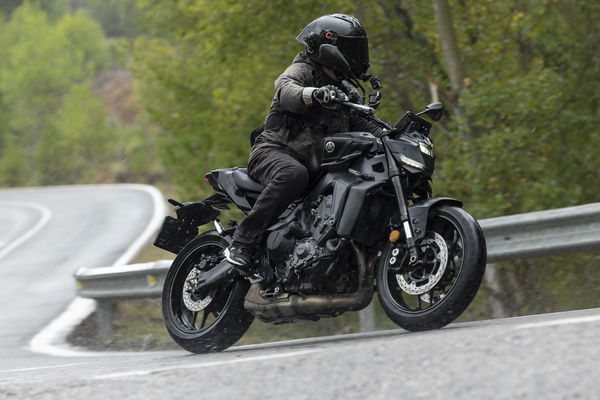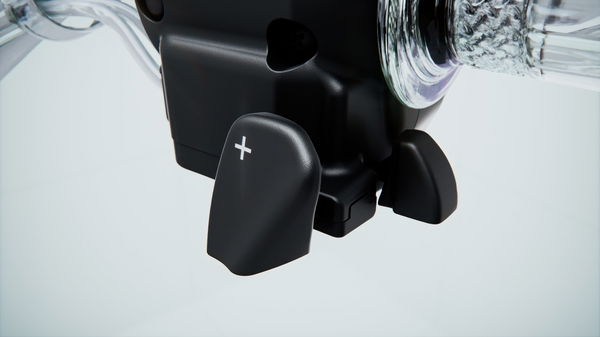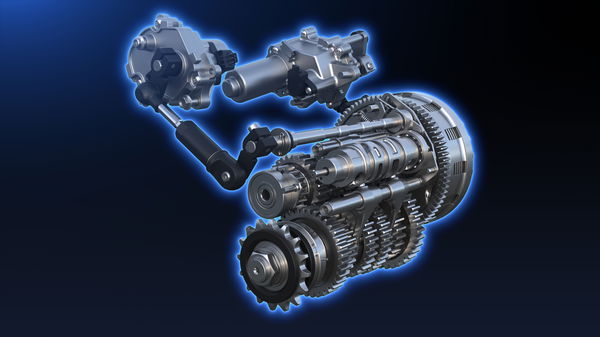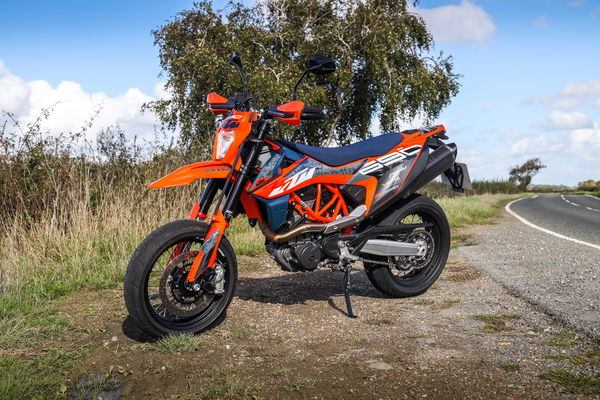Yamaha Y-AMT Review: Automatic MT-09 Y-AMT Tested
Yamaha, like several other manufacturers, is dipping a toe into the automatic transmission pond, but is the new Y-AMT system any good?

In recent years we’ve seen a spike in the number of manufacturers announcing a motorcycle with some form of automated transmission.
Yamaha is the latest brand to add to that list, with its simple yet effective Y-AMT bringing either fully automatic or manual gearshifts (via two buttons on the handlebar) to its extremely popular and recently revamped MT-09.
We rode the new MT-09 Y-AMT at the European press launch in Manresa, Spain. We spent around 200 miles getting to grips with the new gearbox, riding winding country roads, motorways, and around small towns/villages.
There is something to note with this review, and that’s that I won’t be reviewing the bike itself, because if you remove the Y-AMT system, you are left with a motorcycle that is exactly the same as the stock manual gearbox version MT-09. You can find the 2024 Yamaha MT-09 review here.
What Y-AMT stand for?

Y-AMT stands for Yamaha Automated Manual Transmission, and it’s important to understand exactly why Yamaha called it this. It comes down to the fact that within the casings of the CP3 engine that powers the bike, there is a conventional gearbox connected to a normal cable-operated clutch.
There are no complex and heavy fluid flywheels and no dual clutches grasping the next gear on your behalf. The only change to the gearbox compared to the manual MT-09 is that the gears on this bike feature neutral at the bottom, not between first and second gear.
How do you use Y-AMT?

Yamaha’s answer to creating a non-standard gearbox is actually bafflingly simple, in that the engineers in Iwata have developed a robotic hand for the clutch and foot for the gear lever. The simplicity continues when you see the units up close, as they seem to be made up of what look like windscreen wiper motors which are connected to complex gearboxes and output shafts. With these two units fitted to the bike, the need for rider-operated clutch and gear levers is negated, so you lose those on the Y-AMT.
Now if you are in automatic (AT) mode the bike will shift for you, although you always have the option of overriding the system should you want to drop two gears or short shift to sixth. Within AT there are two shifting schedules, D (drive) and D+. D is very lethargic with the gear changes, shifting up early in the rev range and waiting till the last second to downshift as you slow the bike down. D+ is a slightly sportier option, but only marginally so. The more entertaining option is to leave the bike in the manual (MT) mode, and bang up and down the gearbox using the plus and minus buttons located on the left handlebar - but more on that in a moment.
What is the AT/automatic mode like?

There was a fair amount of confusion at the beginning of this press ride, after some UK journos (myself included) sat outside the launch hotel, completely unable to start the bike. With no clutch lever to pull when thumbing the starter, on the Y-AMT you pull the front brake - duh! This is similar to operating a modern automatic car, which won’t let you start unless your foot is on the brake.
Once the engine is running you’ll be in neutral, which as mentioned is at the bottom, giving you a gear run of N-1-2-3-4-5-6. The bike will only engage neutral when you are at a standstill, and when you park the bike you can leave it in first gear which is handy to prevent it from rolling away, and a rather cool security feature. Until the bike is turned on (and it’s keyless on the Y-AMT) a would-be thief is unable to pull the clutch in or kick the bike into neutral, basically making it a very difficult bike to push away.

Yamaha states that the AT mode of the bike is for general riding which I take as pootling about and not really going very fast at all. With a few miles of town and dual carriageway riding at the start of the launch, I set the bike to AT mode to get a feel for the system. Ready for the off I thumb the plus button (located on the leading edge of the left handlebar) and with a THWACK the bike jolts into gear.

Now it’s just a case of twisting the throttle and the robotic hand feeds the power to the rear wheel in a pleasingly smooth and controlled manner. Sometimes bikes in the automatic segment suffer from jerky behaviour off the line, but I’m pleased to report that’s not the case with the Y-AMT, as the clutch engages cleanly and intuitively.
Getting out of the hotel complex and onto the open road, I get to experience my first Y-AMT-spec gearshift which, basically, just feels like a normal quickshift-assisted change - but there is a very good reason for that. This is a normal quickshift gearbox, and the clutch is only used when pulling away and coming to a stop, the rest of the time that robotic boot I’ve mentioned just bangs up and down the box as required.

Further out of town, I decide to see what some full-speed up-shifts are like, and it’s an interesting test. If I pin the throttle in D+ the bike will hang onto the gear right until the redline and then with an audible crack the bike is thrown into the next gear and a twitch runs up through the chassis.
Downshifts in D+ are much more leisurely, and instead of downshifting and using high RPM engine braking (as I would if manually shifting), the downshifts all seem to happen down below 3,000rpm. You can of course override the downshifts and make more use of the rev range, although on a couple of occasions when I do this the bike second-guesses my change, and shifts up again before I can hook the next (lower) gear.
One other trait of the Y-AMT system that I have found is that it shifts up and down the box while you are going through a corner. That’s not such an issue at low speed and around town, slightly more perplexing on a twisty road when riding at pace. The behaviour comes from the Y-AMT not being connected to the bike’s IMU (as is the case with Honda’s latest generation DCT which is IMU-linked), so the control unit for the Yamaha gearbox has no idea what the lean angle, yaw, inclination or direction of the bike is - it just has engine speed and throttle position to go by. The next generation of this gearbox would massively benefit from a bit more connectivity, and it could also lead to a slightly sportier D++ mode if it did happen.
What is the MT mode like?

Riding a bike that has a button-shift system is always entertaining, especially when the gear changes happen in just one-tenth of a second. Once you have got your head around not needing to combine your left foot and hand to move through the ‘box you start to have some fun with the system.
Downshifts are by far the most entertaining element of a button-shift gearbox, allowing me to hammer down the gearbox wringing every last RPM from the inline-three cylinder. Upshifts are also fun, but with quite a lot going on beneath you isn’t the same silky smooth transition of power you get from the DCT system, for example.
Is the Y-AMT system worth having?

It might not be as smooth as the DCT, but for a system that effectively does all the same things as it, the Y-AMT system is embarrassingly simple, lighter (it only adds 2.4kg), and cheaper to produce. It’s also not crammed full of complex, one-off components, meaning that should it fail it’ll be a simpler and cheaper thing to fix.
Do I, a rider of manual bikes for years and with extensive experience with other automatic motorcycles, think the system adds anything to the existing MT-09? No, not really, but that doesn’t actually matter that much. The system has been developed because more and more people are driving cars that feature a paddle or button-shift gearbox. Not having the option to buy a bike which has a similar gear change mechanism to the car that they drive is seen as a barrier to people like that getting on two wheels. This is why BMW, KTM, and now Yamaha are all looking to get in on the act, while Honda has been making dual-clutch gearboxes for motorcycle for years, and now offers E-Clutch as a sort of halfway house.
Probably the biggest bonus of getting on the Y-AMT bandwagon is the price, as at £10,656 (OTR) the automated manual Yamaha is only £550 more than the stock bike, and further sweetening the deal, the automatic machine gains keyless ignition - which is a first in the sub-1000cc naked class.
You can find out more about the Yamaha Y-AMT system on the official website.












